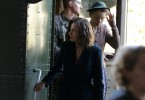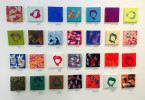Fabregé: Jeweler to the Tsars
Through Sept. 27
Oklahoma City Museum of Art | Oklahoma City
There was a massive crowd at the Oklahoma City Museum of Art Friday night, and for good reason: to see bejeweled eggs, adorned frames, ornamented trinkets, sparkling chalices, and more — from none other than Peter Carl Fabergé.
Favored by the Russian Imperial family, Fabergé took advantage of his privileged status as a supplier through his role on the court of the Romanovs, filling the Alexander Palace with creations from his St. Petersburg workshop. At a time when the people of Russia were starving and struggling to make ends meet, the Romanovs were living it up in Tsarskoye Selo and rolling in the bling — you know, not to generalize or anything.
It does seem weird to be openly admiring the prodigal possessions of an extravagant dynasty, but nonetheless, Fabergé’s pieces make the mundane completely beautiful. One of my favorites was a fancy schmancy playing card case (plus, there were some wine glasses that would look pretty great on my bar cart).
But the exhibit’s crown jewel, so to speak, is the Imperial Tsesarevich Easter Egg of 1912 (pictured above), a gift to Empress Alexandra from Emperor Nicholas II to commemorate their son, Alexsei, who almost died from hemophilia. With a shell made of six pieces of enviable lapis lazuli (that Beach House song makes sense now), the seams are then concealed with an elaborate gold filigree encasement, and inside are a diamond encrusted Romanov family crest framing a portrait of young Alexsei — subtle, without a doubt.
When you’re in the presence of something so surreally exquisite, it’s hard to fully grasp its true value and pricelessness. What comes off as a pretty, shiny egg was created from invaluable metals and jewels after hours and hours of painstaking, tedious labor. The work that went into its conception is almost as — if not equally — impressive as the final product.
Whether or not you’re into glittering or decorative objects, Fabergé: Jeweler to the Tsars is worth witnessing for its pure infamy and historical importance alone. And you have until September 27 to see this exhibit, so get up on it.





